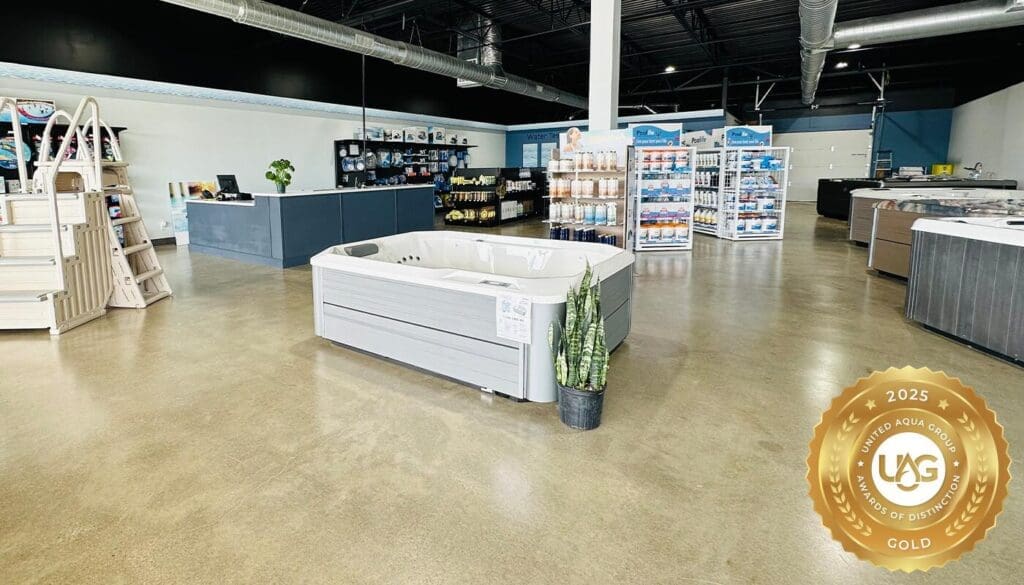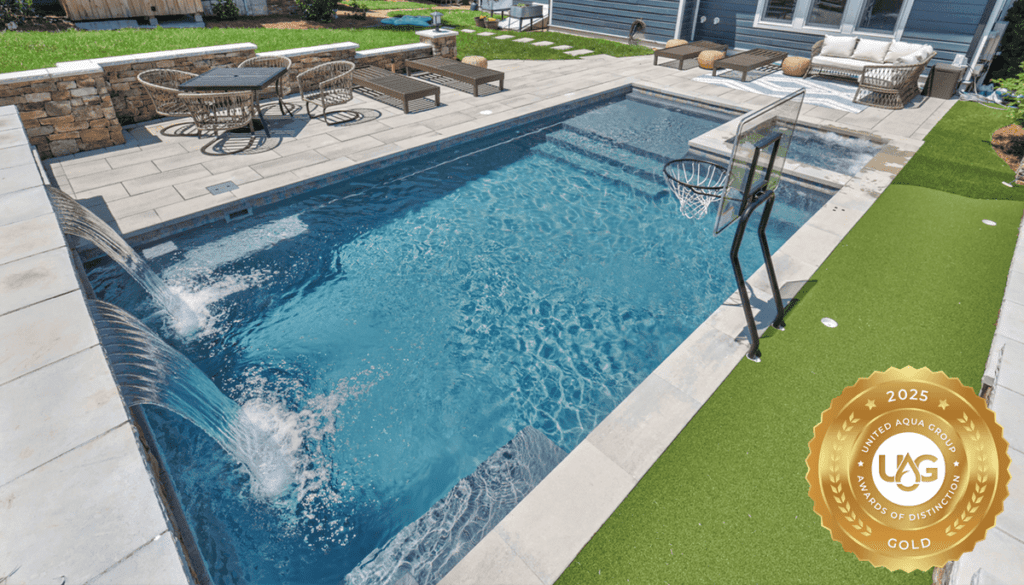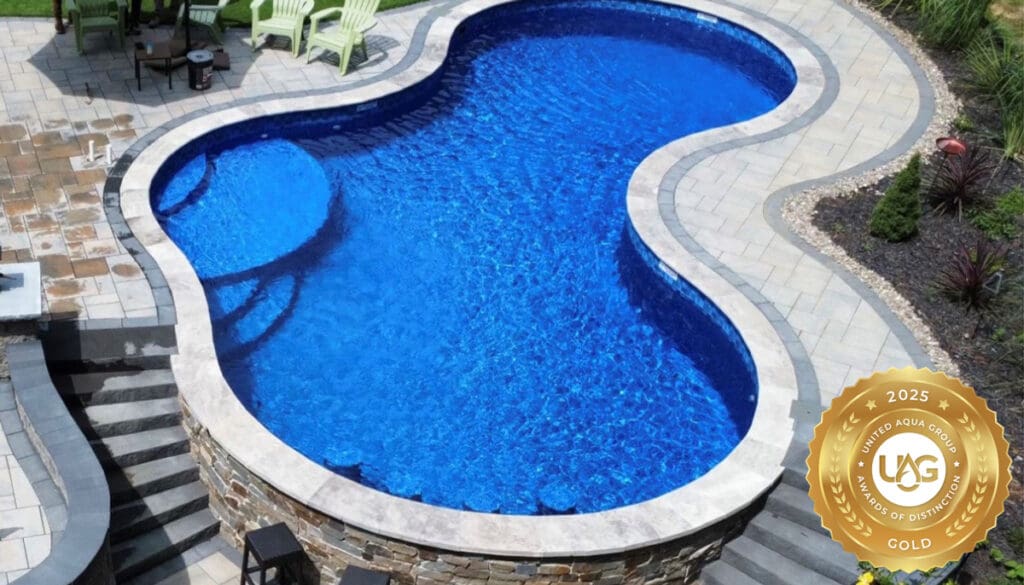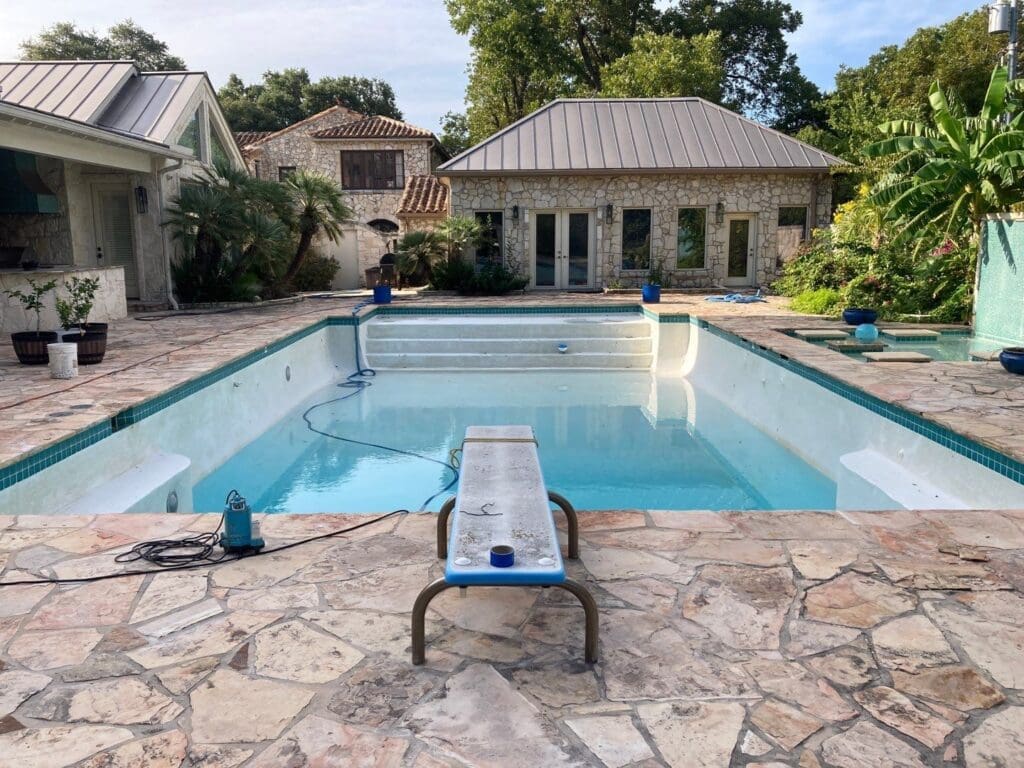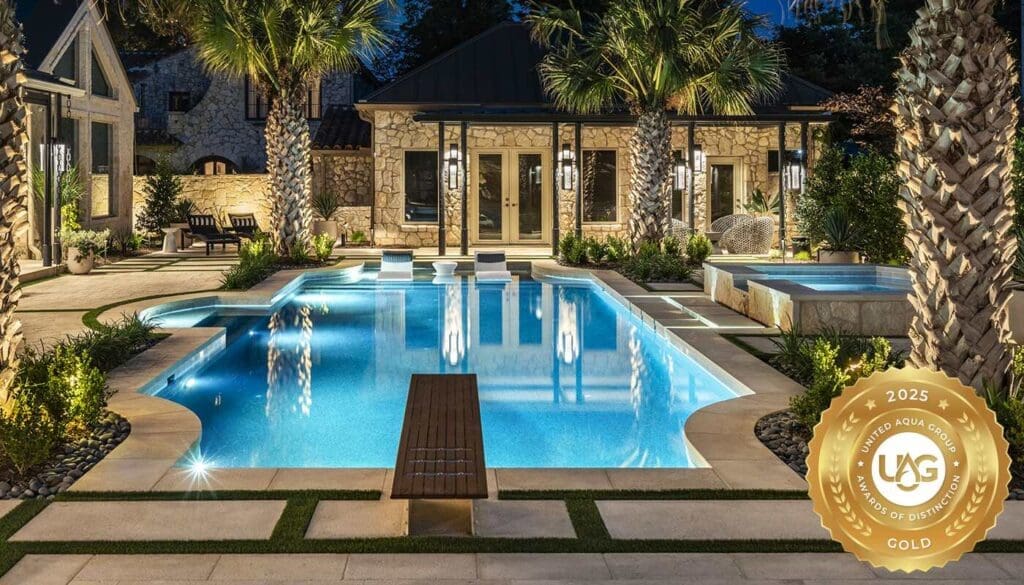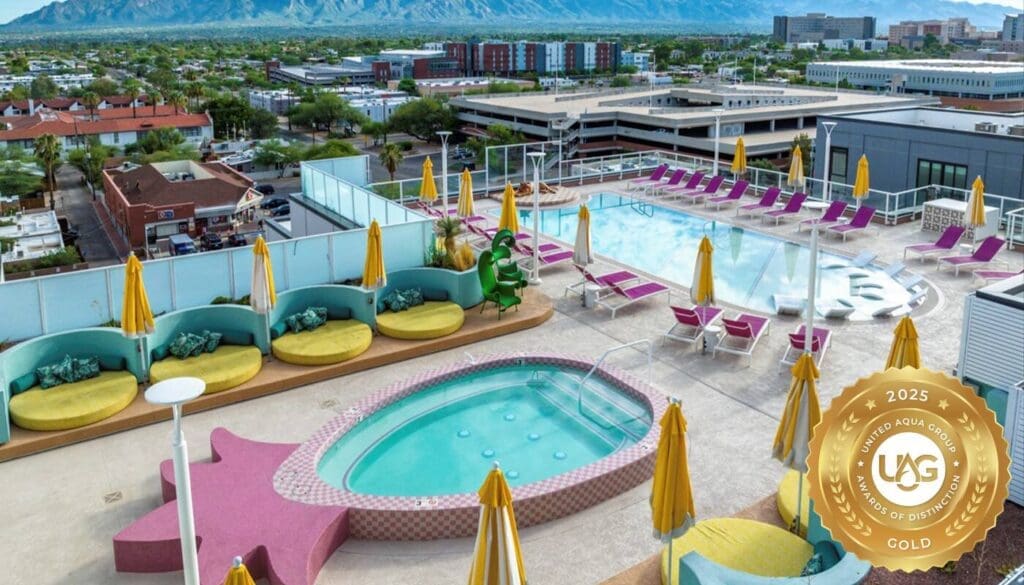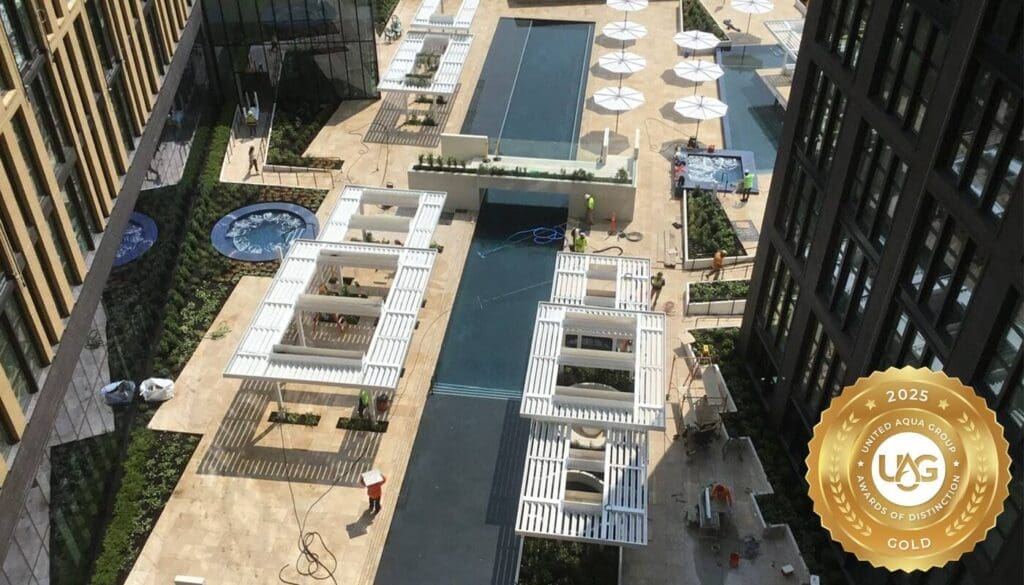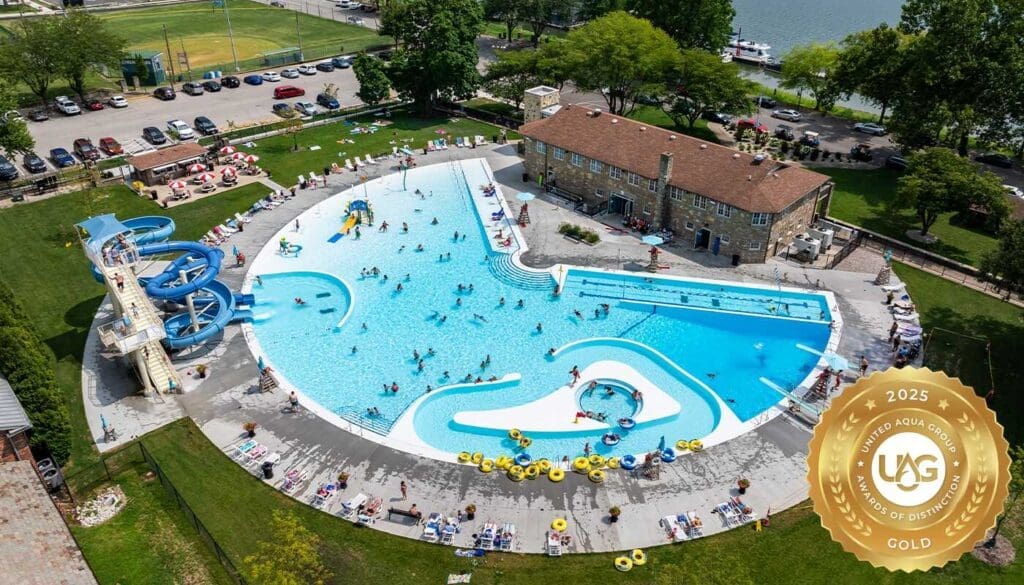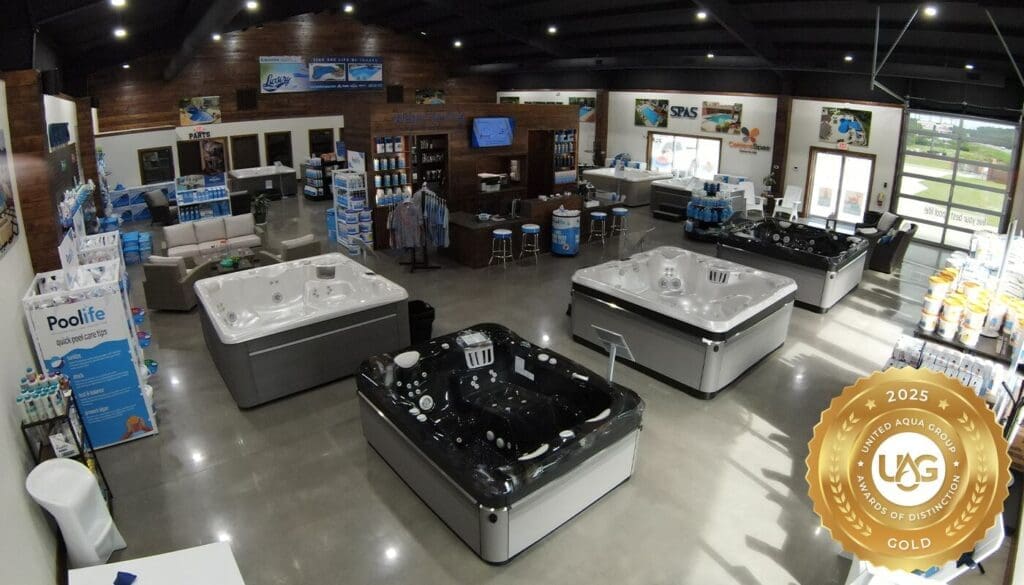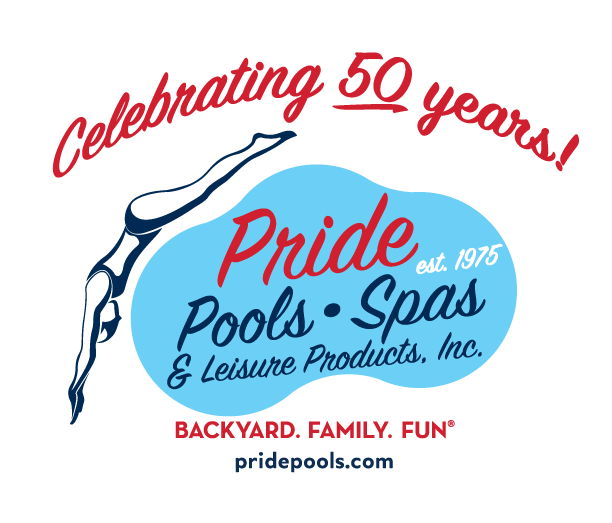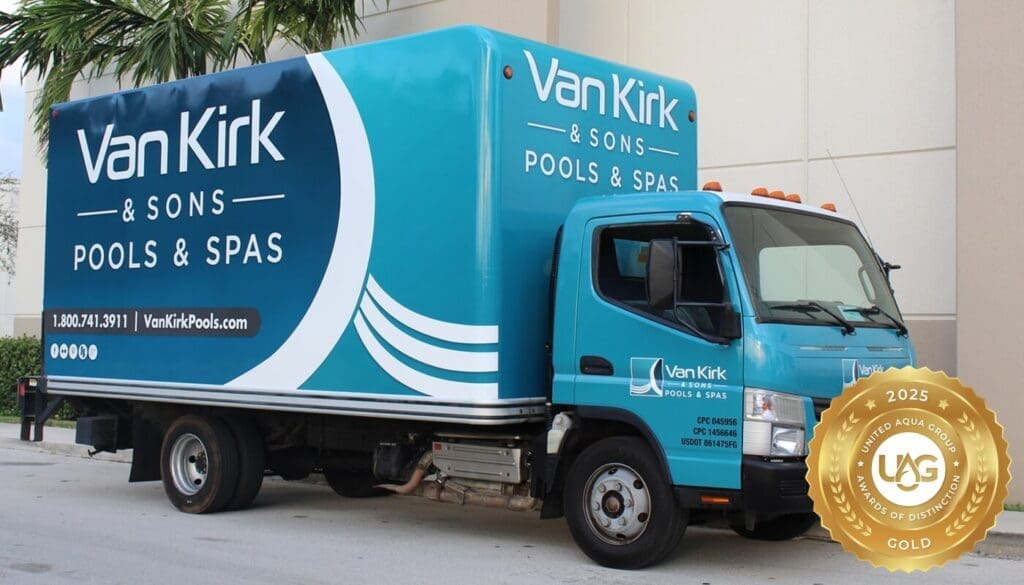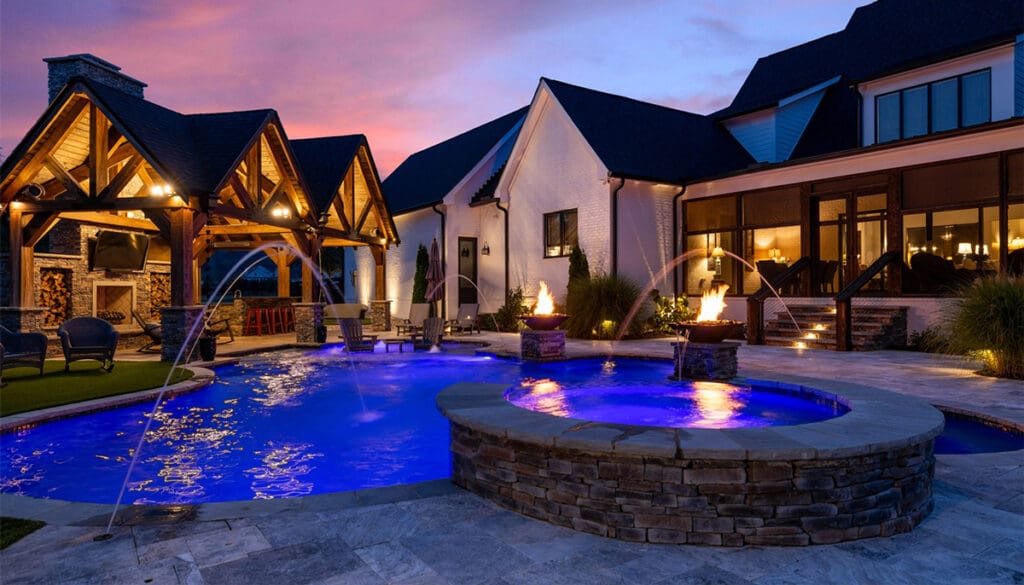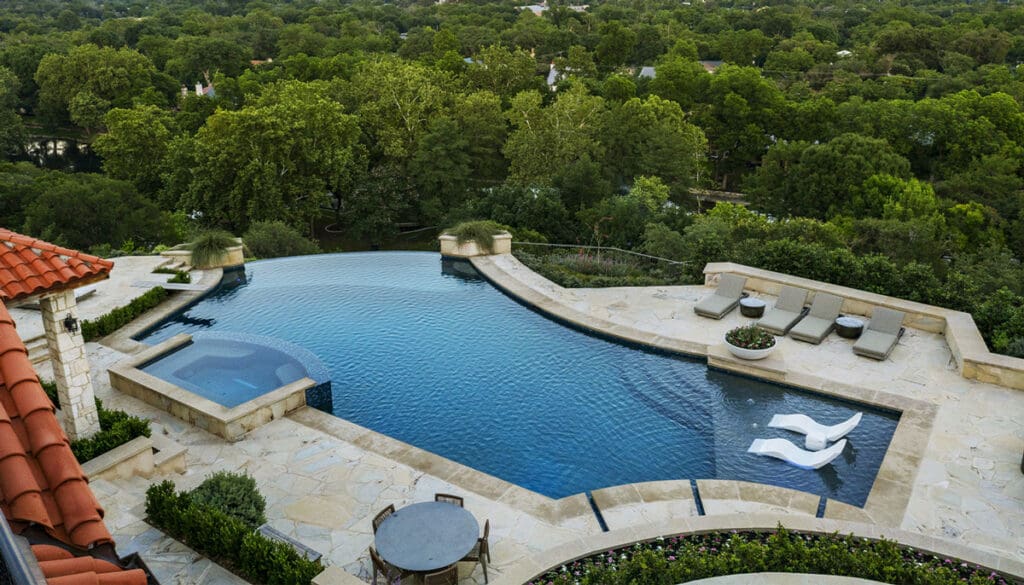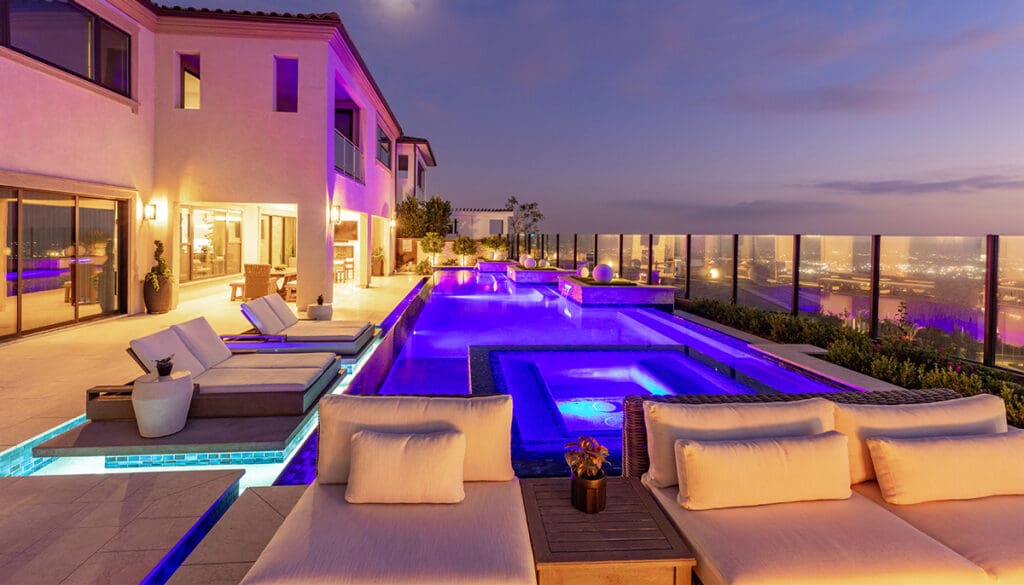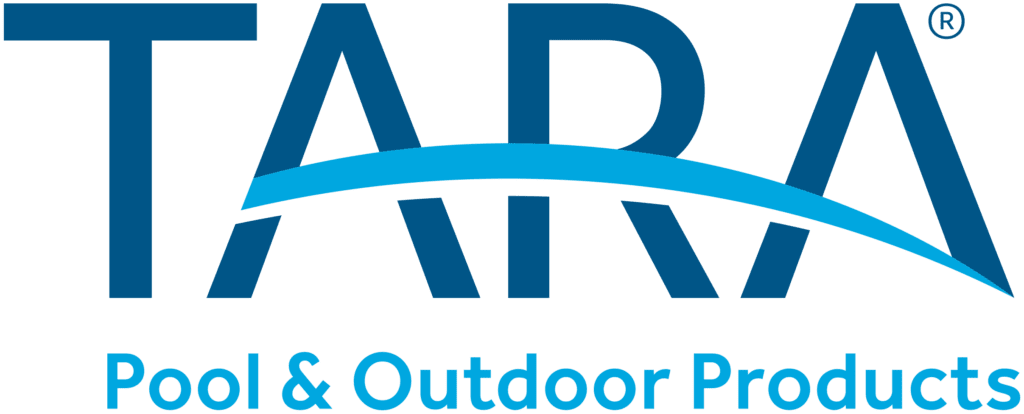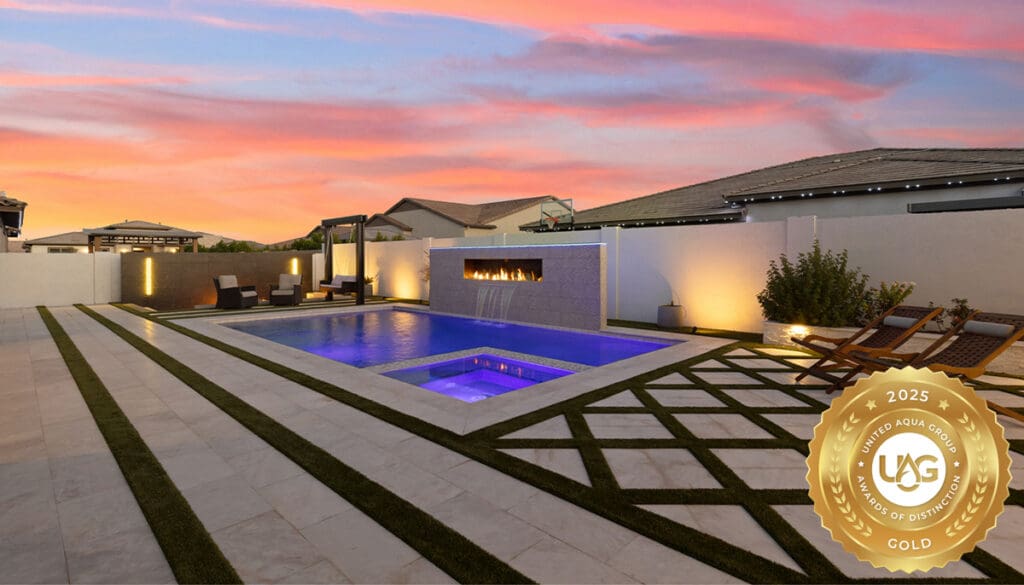A to Z Swimming Pool Terms
If you’re interested in learning more about the pool industry, check out our swimming pool terms glossary for a comprehensive list of swimming pool terminology you should know.
Above Ground Pool
A type of pool that rests on the ground, doesn’t require excavation, and is typically more affordable and simpler to install.Air Relief Valve
A manually-operated valve at the top of a filter tank that relieves the pressure inside the filter and removes the air inside the filter. Also called a pressure-relief valve.Algae
A collection of green micro-organisms that form in water and can affect its clarity, making it unsuitable for swimming.Algaecides
Chemical compounds that kill, prevent, and control algae.Automatic Pool Cleaner
A device that vacuums debris from the walls and floor of a pool.Bacteria
Swimmers can contaminate a pool that hasn’t been properly disinfected with bacteria, which can aid in spreading waterborne diseases and illnesses.Backflow
The backing up of water through a pipe in the direction opposite to normal flow.Backwash
Reverses the flow of water back through the pool’s filter to remove any contaminants the filter catches.Balancers
Chemical compounds that prevent corrosion and staining by balancing the pH, total alkalinity, and calcium hardness in pool water.Bromine
A chemical compound used to sanitize and disinfect swimming pools. Similar to chlorine.BTU
An abbreviation for British Thermal Unit. The amount of heat necessary to increase the temperature of one pound of water by one degree Fahrenheit.Calcium Hardness
The total amount of calcium dissolved in pool water. Ideal levels are 100-400 ppm. High calcium hardness can cause scaling.Chlorinator
An electrical or mechanical device that creates chlorine from a sodium chloride solution at a controlled rate.Chlorine
A common pool disinfectant that’s essential to keep the water sanitary and the pH levels balanced. Excess chlorine can irritate the skin, eyes, and sinuses. A lack of chlorine can increase one’s risk of contracting a waterborne disease.Chlorine Neutralizer
A chemical that makes chlorine less harmful by counteracting the bleaching effect of the chlorine or bromine to make pool water tests more accurate.Cleaners
Chemicals are used to ensure the pool and pool equipment are clean and sterile for regular use. These chemicals include chlorines, algaecides, clarifiers, and stain removers.Conditioner
Also known as Cyanuric Acid (CYA) or a stabilizer, this chemical forms a shield around the chlorine molecule that protects it from the sun.Coping
The lip around the top of a pool or hot tub wall.Corrosion
The eating away of the pool and/or its equipment. Can be caused by improper water balance, misuse of acid or acidic products, or the softness of the water.Covers
Protect pools from debris and can retain pool heat, reduce energy costs, and reduce both cleaning time and expenses. Pool cover types include solar, automatic, slatted, thermal, concealed, and winter.Decking
The material surrounding a pool. Typically concrete, wood, composite, or natural stone.Drain
A plumbing fitting that’s installed on the suction side of the pump and located at the deepest part of the pool.Filter
A device used to remove particles suspended in the water by pumping water through a porous substance or material.Filtration
A system that keeps the pool free from dirt and debris. Two common types are sand filters and glass filters.Grout
A paste-like mixture that’s applied between tiles and dries solid, creating an insoluble surface.Heat Pump
Its cooling coil removes heat from the air, and the condenser coil transfers it to the water that cycles through it.Infinity Pool
Pools that appear to blend in with a natural landscape, specifically other bodies of water like lakes and oceans.Inground Pool
Permanent pool structures that are built into the ground, usually in backyards.Maintenance
Essential in keeping a pool clean and enjoyable to use for extended periods of time, often including cleaning and managing the pool water’s chemical balance.pH Level
The chemical balance or imbalance of pool water.Pump
Pulls the water from the skimmer and drain before circulating it through the filter by pushing it back through the returns in your pool.Purification Systems
An alternative for chemical treatments that sanitizes the pool water.Saltwater Pool
A salt chlorine-generated pool or a pool that uses a salt chlorine generator.Scaling
A condition where sharp ridges or scales form on the pool’s inner surface as a result of excess calcium content.Winterizing
Closing a pool during cold winter months to protect the structure and its equipment from freezing or other damage.Become a United Aqua Group Member
Do you want to join the nation’s largest and most prestigious pool supplies buying group?
Get ready to Earn More, Learn More, and Buy Better with United Aqua Group.


